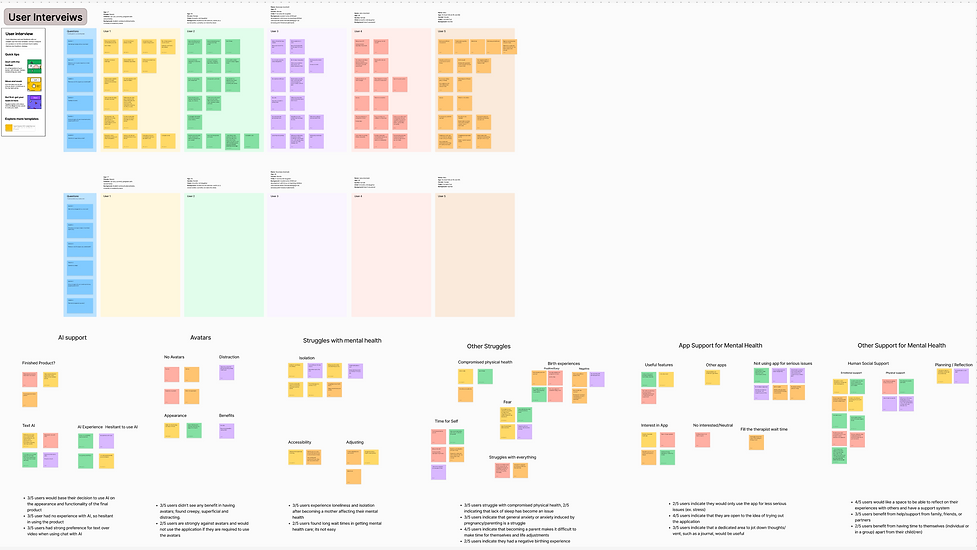
ORA: Designing an AI-Supported Mental Health App
ORA is the flagship AI-powered mental health companion developed by mexb.ai, a Berlin-based startup born from the real-world struggles of its founders. While I participated briefly, my work contributed to foundational user insights and design direction during its early conceptual phase.
COMPANY NAME
Mexb.ai
ROLE
PRODUCT DESIGNER
TEAM
PRODUCT DESIGNER
UI DESIGNER
UX RESEARCHER
TOOLS
FIGMA, UserBrain
TIME
4 WEEKS
App Overview:
What is ORA?
ORA is envisioned as a compassionate, AI mental health guardian offering guidance, journaling, mood tracking, and personalized self-help available 24/7, with video and audio CBT-inspired sessions, biomarker integrations (mood, voice, sleep, activity), and strong privacy and encryption features.
Origin Story:
The founders, driven by personal experience and volunteer work built mexb.ai to address the acute mental health access gap in Germany, where waiting times for therapists can extend to several months.
Key Differentiators:
-
AI fine-tuned on mental health data
-
Multilingual support (e.g., German, English)
-
Anonymous community features
-
Ethical, trustworthy AI with robust security

Add a Title
Add paragraph text. Click “Edit Text” to update the font, size and more. To change and reuse text themes, go to Site Styles.
Where My Contributions Fit In
1. User Research & Insights:
-
Uncovered user preferences like text-based AI over video and skepticism toward avatars.
-
Emphasized value in self-reflective journaling, privacy, and planning help.
These insights support the site’s emphasis on diary, mood tracking, and self-help rather than purely avatar-driven experiences
2. Focus & Positioning (SWOT Analysis):
-
Reinforced positioning as a complement and not as a replacement for therapy.
-
underscored the opportunity for ORA to address early-stage mental wellness support.
3. Prototype Testing & UI Flow Suggestions:
-
Your testing pushed for clarity, calming design, and guided interaction.
-
Helped prioritize the journal + mood tracking features as core user value props.


SWOT Analysis

Visual Designs





Next Steps:
While my volunteer engagement with ORA was brief, I concluded my contribution by outlining opportunities for the team to take forward:
-
Refine Onboarding Flow: Simplify copy and visuals to make first-time use more welcoming.
-
Focus on Journaling & Reflection: Position these as core features where AI adds supportive value.
-
Enhance Personalization: Allow users to tailor their experience (tone of AI, frequency of prompts).
-
Build Community Support: Explore peer forums and group features to complement individual reflection.
-
Continue User Testing: Validate design changes with diverse users to ensure accessibility and trust.